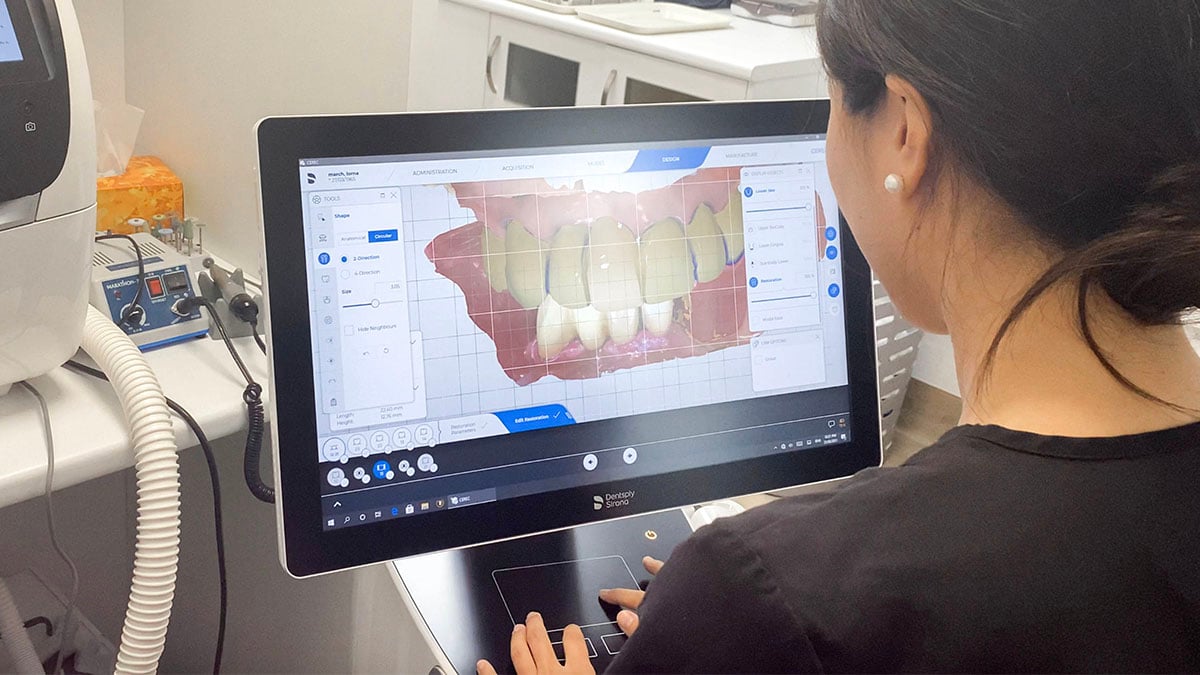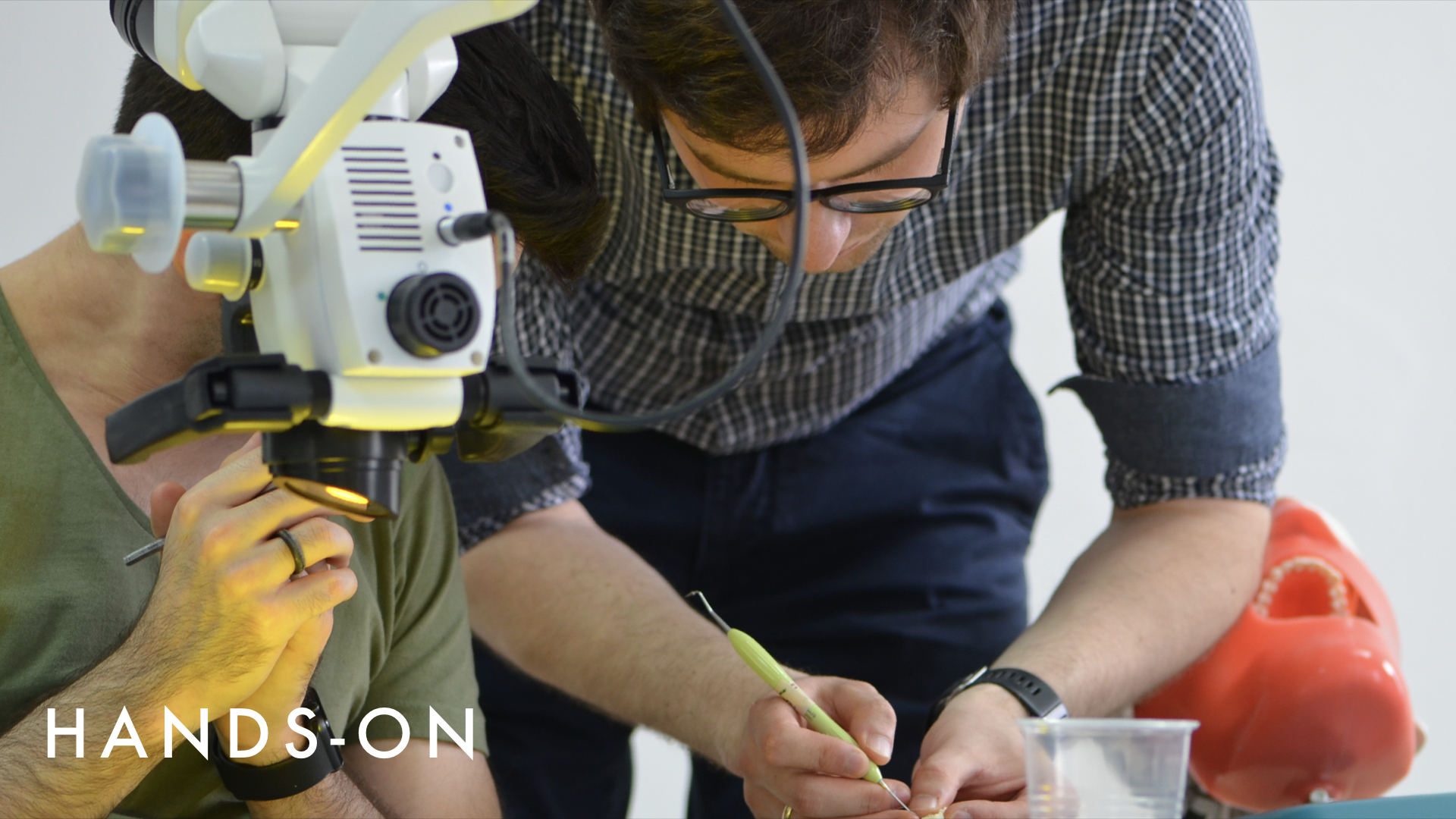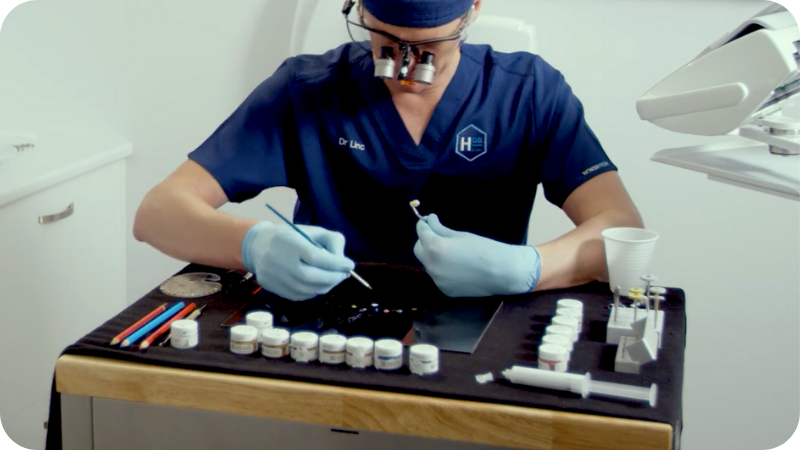The Chairside Economical Restoration of Esthetic Ceramics (CEREC) system is a versatile use of technology that can help to deliver the best possible procedures for your patients. However, it takes training and knowledge to fully utilize the capabilities of this machine.
Below, we’ll discuss the five best CEREC tips and tricks for mastering digital dentistry, and how you can uplift your digital dentistry offerings at your practice.
5 CEREC Digital Dentistry Best Practices
CEREC Tip 1: Take a Pre-op Digital Scan
Before you start your preparation in the biocopy catalog, a CEREC best practice is to take a pre-op digital scan. Performing a pre-op scan before preparation will provide the following benefits:
Patient Diagnosis and Record Updates
The main benefit of pre-op scans is that they allow you to visibly show the patient their diagnosis and any pre-existing dental condition. You can then walk them through the process and update their dental records.
Future Accessibility
Another benefit of a pre-op digital scan is that you can copy the shape, size, and contours of the patient’s tooth before creating your design proposal. This will enable you to restart the process without an issue if there is an unexpected dental emergency, such as a tooth fracture.
Visualize Your Preparations
Later, after you’ve scanned your final preparation arch, you can then map and visualize your preparations according to the pre-op scan. You can then use this analysis as a reduction guide to fully compare and assess your preparations. Furthermore, you can use a diagnostic wax-up model to accomplish the same overlay and visualization process.
CEREC Tip 2: Turn On Biocopy Catalog and Fit It to Your Design
During the design process of your restorations, it’s important that you turn on the biocopy catalog and overlay it onto your design.
By doing this, you can compare and contrast the position, size, shape, and occlusion of the patient’s condition. This will then allow you to modify the design to match the pre-op condition for the best result.
In most cases, you’ll notice that your design is smaller in each of the four planes to your pre-op tooth. However, by mapping the biocopy catalog onto your design, you can adjust your design accordingly. Additionally, you can choose to copy either some or all of the pre-op tooth/teeth anatomy with the design mode found in your biocopy catalog.
CEREC Tip 3: Scan Your Preparation Arch
After you’ve turned on your biocopy catalog and overlaid it with your design, you should then scan your preparation arch. The scan should extend to, at the very least, the contralateral canine. Alternatively, you can scan the full arch, which can:
- Allow you to receive more accurate initial design proposals.
- Lead to less editing later on.
- Enables you to check and/or remove occlusal interferences in your design proposals.
If you’re unsure about what the situation calls for, additional training can help give you the confidence to make the best choices for each patient.
CEREC Tip 4: Make Desired Changes to Local Parameters
Once you get your initial proposal, you can then make any necessary changes to the local parameters based on the material you are using for your design.
If you do this before making any changes to your design, you won’t lose your progress, and you’ll save yourself a headache. If you change your initial design proposal’s positioning, occlusion, or contacts and then change the local parameters, your work will be lost and you’ll need to redo the entire process from start to finish.
CEREC Tip 5: Prep for Success!
Before finalizing your preparations, make sure you have the correct and minimal thickness for the chosen material of your design. To avoid overmilling and find the ideal fit, you should aim for:
- Smooth surfaces.
- Clear and well-defined margins.
- No undercuts.
Afterward, you should check for and fix any rough or misshapen adjacent tooth contacts. This will allow for broad contacts in your design and help you avoid a faulty design.
CEREC Prowess for Digital Dentistry Confidence
CEREC is a complex practice and the technology can be difficult to master. However, many dentists claim that learning the technology is worth the effort and can save you money over time.
With the right training and education, you can begin implementing your CEREC best practices in no time. Learn more about digital dentistry and take your dentistry education to the next level.







